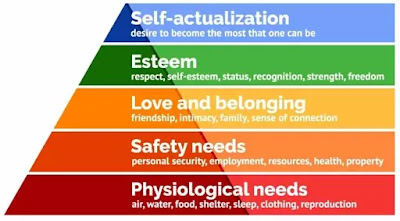The concept of environment is complex and
comprehensive. Environment is made up of both biotic (living) and abiotic
(non-living) components.
Environment may be defined as a science concerned with
all the problems faced by man in relation to the surrounding totality.
The nature of environmental studies is heterogeneous
and dynamic. Man has modified his biotic and physical surroundings. He is
constantly exploiting resources. This has led to deterioration of environmental
quality. Some of the major problems are population explosion, soil erosion,
deforestation, pollution of air, water and land and extinction of living
species.
The scope of environment studies is extensive.
Environmental study
enables man to accept his responsibility towards the environment. It enables
him to control environmental degradation by using resources sustainably.
The word 'environment' comes from the word 'environ' which means 'to be around'.
Environment can be defined as teh sum total of all external conditions and influences that affect life on earth.
ENVIRONMENTAL SYSTEMS
Physical / Natural Environment - is of two types Abiotic and Biotic
Abiotic / Non living components:
Location - The location of a country is a prime factor that influences human activities (especially climate). Location is of two types:
Absolute lcoation - is defined by the lines of latitudes and longitudes. It is the exact location of a place on the ground.
Polar areas experience low temperature
Tropical areas have high temperature and rainfall.
Middle latitudes have moderate temperature and rainfall.
Relative Location of a place is its position in relation to other features like roads, railways, sea, market, etc.
Maritime Locations provide facility of water transport.
Continental Locations lack facility of cheap water transport. e.g., Nepal depends on Kolkata (in India) for trading activities.
Topography - Physical features of a region like mountains, plateaus, plains, valleys, etc., form the topography. It influences the development of economic activities.
e.g., Mountainous regions economically underdeveloped due to inaccessibility. Matheran
River valleys and plains - human settlements - transport and agriculture.
Climate - is the most fundamental factor of physical environment. It influences plant growth, types of houses man builds for himself, economic activities, etc.
e.g. Cool climate keeps man energetic and hardworking. Hot climate makes man physically weaker and exhausted.
Shape and size of a country - Large countries like USA, India are likely to have wider range of resources which leads to higher economic growth and development.
Smaller countries like Japan and UK have limitations in teh availability of resources and have to depend on imports.
Compact countries have high econmic development as coordination of resources becomes easy.
Fragmented countries (Phillipines) face problems of overall development.
Country having latitudinal extent or elongated shape (Chile / Peru) face problems of political control and integration.
Coastline - Water transport is teh cheapest. Most world trade is carried on by water transport. An indented or broken coastline provides ideal locations for development of harbors and ports.
Minerals - are the most unevenly distributed resource on the surface of the earth. this has led to large scale trade in minerals and power resources. Areas rich in mineral deposits attract large number of people to areas less suitable for humna settlement e..g., Saudi Arabia, Kuwait, Iraq (oil deposits).
Soil - Different types of soils are found in different regions. Soil is a governing factor in growing crops. Fertility of soil controls the quality and quantity of crops.
Biotic / Living Components
Natural Vegetation - Plants and vegetation form the livig natural components of environment. They play a major role in maintaining natural ecological balance. Natural vegetation provides a base for a variety of economic activities like lumbering, hunting, etc.
Animals - including man and other micro organisms are living components of the environment. A large variety of animals depend on climatic and physical conditions. Herbivors - grass eating
carnivors - flesh eating Omnivores - both plant and flesh eaters
Cultural / Manmade Components
Social environment - develops as a consequence of humna traits like religion and ethnic character of the population.
Political Environment - Government plays an important role in promoting peoples welfare through economic development. The political conditions prevailing in a country directly affects the flow of commerce of that country. Different countries follow different political systems. for e.g., Democracy, Dictatorship, etc. The government policies of taxation, quota system, development of industries, determine the political envrionment of the country.
Economic Enviornment - develops as a result of economic activities of man like farming, mining, trading, etc.
Technological envrionment - Technology used for developing resources plays a significant role in improving the economic environment of a country. Mechanization allows mass production. Technological innovations enhance the quality of production. Technology promotes economic development but improper use of technology leads to serious problems like growth of unemployment and deterioration of environment through air and water pollution.
